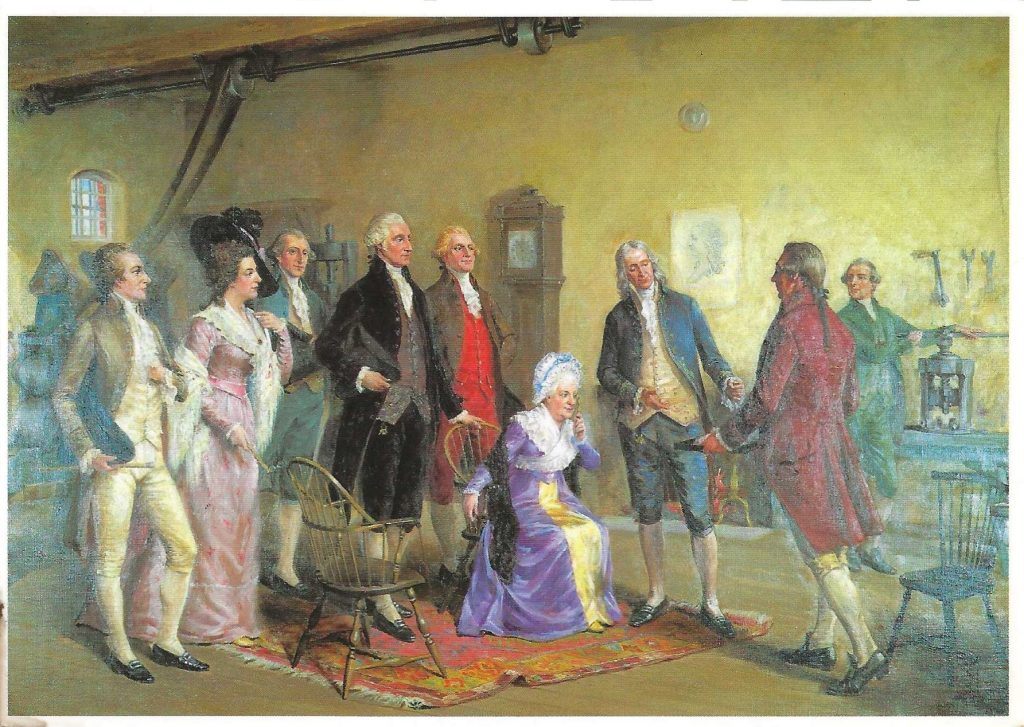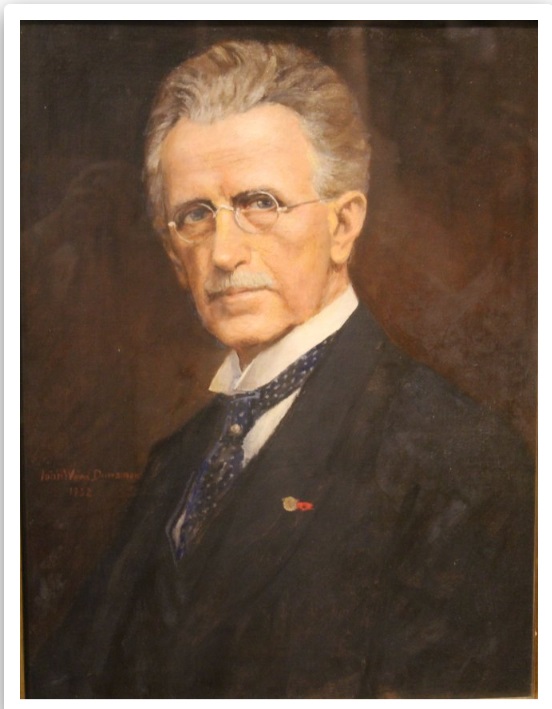
This card was manufactured by Coastal Exposures Incorporated in Maine. Estimates suggest that it was issued sometime after mid-June 1974. It is a 4 ¼” x 6” chrome, and it is the only postcard I have seen of the event that is the topic of this history lesson.
The Coinage Act that was passed by Congress on April 2, 1792, also known as the Mint Act, established the United States Mint, the United States dollar as the country’s standard currency, and regulated the coinage of the United States.
The same legislation established the silver dollar as the unit of money in the United States, declared it to be legal tender, and created a decimal system for U.S. currency. The Mint was to be situated at the seat of government, which at the time was Philadelphia, Pennsylvania.
It was likely an executive decision that the first coin to be minted would be the disme since the new currency was based on the decimal system. When the coins were ready the chief coiner of the mint invited President George and Martha Washington, Mr. and Mrs. Alexander Hamilton and Thomas Jefferson to examine the new coin.

The word “disme” has multiple meanings, including a former U.S. coin. The spelling is from Old French (circa 1500s), but the pronunciation is unchanged. A disme is a tenth part of something or a “tithe.” When “disme” was adopted by the English speakers in America they discarded the “s.”
The image on the featured card is that of the John Ward Dunsmore painting, The Inspection of the First U.S. Coins. The original painting was commissioned by Frank Stewart in 1914. Upon completion it was turned over to him and he donated it to the mint in 1916. It has been there since.
Frank H. Stewart was a school dropout, but a self-educated individual who wrote a remarkable history of our nation’s first coin factory. He was not an art enthusiast, but he commissioned several paintings of the first U.S. Mint by famous artists, such as John Dunsmore.
The commission was an unexpected one, but work began almost immediately and was completed in just four months. The painting is oil on canvas and measures 24” x 36”.
The scene was based on the legendary tale that the dismes being shown to the Washingtons and others were struck from silver acquired from George’s and Martha’s household table silver-service.
There are nine figures in the painting, left to right are Alexander Hamilton, Mrs. Hamilton, David Rittenhouse, George Washington, Thomas Jefferson, Martha Washington (seated), Adam Eckfelt, Thomas Lear holding out a tray of coins for Martha to inspect, and Henry Voigt at the coin press in the background.
Although the event was a noteworthy achievement in the history of the U.S., the painting did not escape criticism. Many newspaper editors reviewed the image. Most found it praiseworthy especially for the accuracy and “recognizability” of the persons, but some thought the scene to be cluttered with furniture. Apparently, they thought the chair intended for Mrs. Hamilton, the grandfather clock, and belting shown above to drive the machinery, were too much.
Other details (or clutter, the word the critics used) were included simply because it was the nature of the painter’s art. The tools (wrenches, calipers, and others) hanging on the wall above the coin press are in the art because coin-makers use tools. And, it was simple genius on the part of the artist to show a copy of the coinage act on the wall behind the gathering of inspectors. The grandfather clock and the overhead power-belts lend detail and reality to the scene.

John Ward Dunsmore lived to be ninety years of age (He died in 1945). During his career he was known as one of the United States’ most prominent painters of historic subjects. He was also known for his rigorous search for detail that would lend elegance to his work. He would begin every commission by creating elaborate stagings and dressings of models that he did in his own studio.
Dunsmore was honored by the 1893 World’s Columbian Exposition Committee when he was asked to exhibit his painting of Wolfgang Amadeus Mozart at the Chicago event.
Currently there are nearly fifty of his paintings in the permanent collections of venues such as the Fraunces Tavern Museum in Manhattan, and institutions such as the National Portrait Gallery in Washington and the New York Historical Society.
* * *
In addition . . . for the super-curious among us who have just read names that they don’t recognize, there is the following . . .
David Rittenhouse (April 8, 1732 – June 26, 1796) was an American astronomer, inventor, clockmaker, mathematician, surveyor, scientific instrument craftsman, and the first director of the United States Mint.
John Adam Eckfeldt was a lifelong Philadelphian who rose through the ranks at the United States Mint. He served as the second chief coiner of the mint, from 1814 until 1839.
Thomas Lear. This information is unverified, but Lear may have been a young patriot who spent the winter of 1777 with the Continental Army, led by General George Washington. Later he won government positions and partnered with several officials at the United States Mint in Philadelphia.
Henry Voight (1738–1814) was a clockmaker, mathematical instrument maker, machine and steam engine builder, and Chief Coiner of the first United States Mint. He operated a wire mill in Reading, Pennsylvania, and repaired clocks and watches for his friend Thomas Jefferson.
Excellent analysis of this fascinating painting!